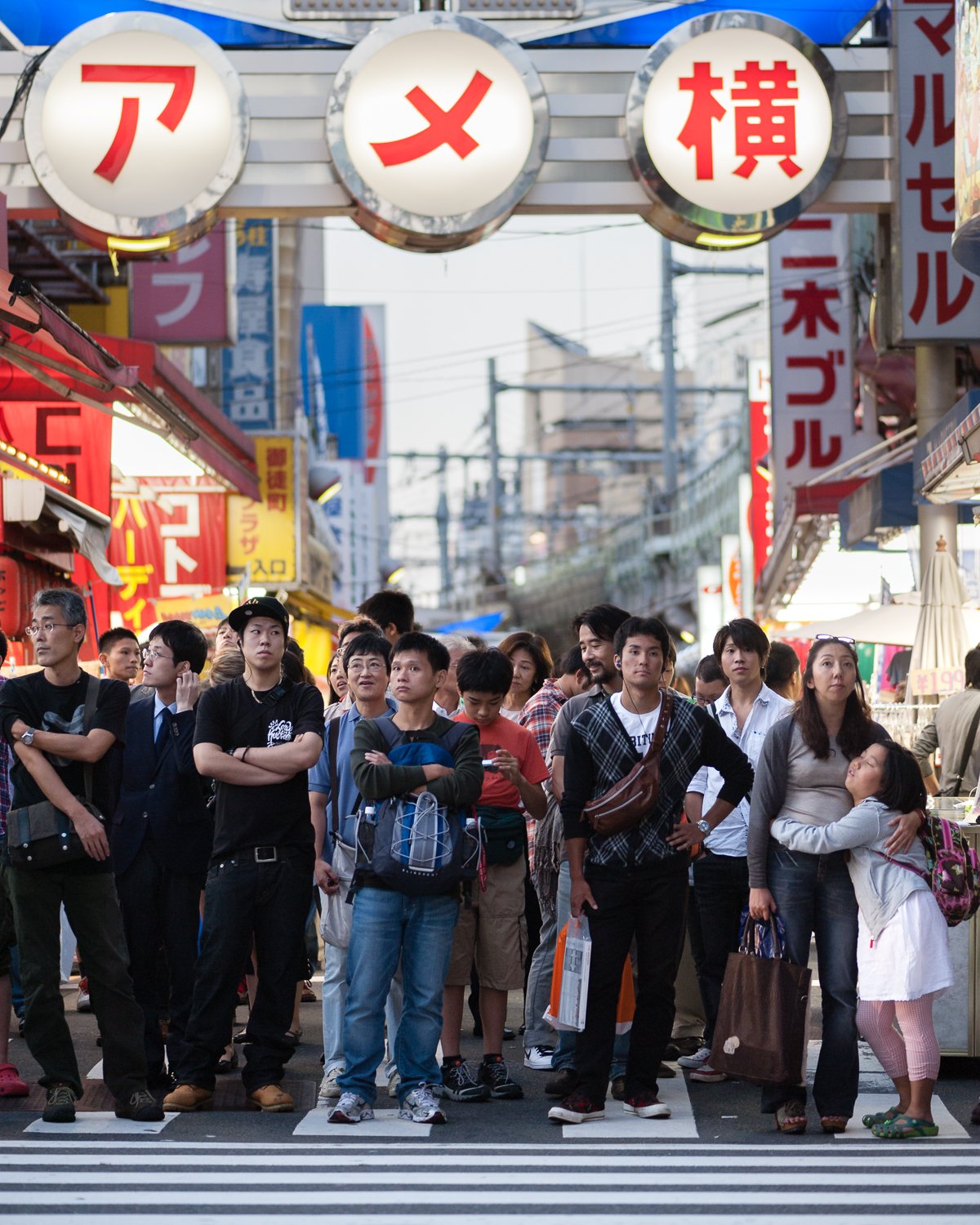Eye Contact
Eye contact makes an image stand out. Some of the most outstanding shots in fashion, sports, portrait, and journalism are centred on eye contact, and street photography is no different.
“Whose eyes connect with who is often overlooked. ”
Direct contact is compelling and palatable for the viewer. The connection is instant and will draw the viewer into the rest of the image. This allows the viewer to judge without being judged in an entirely unnatural yet enviable state to stare into someone's eyes without them staring back. It is a win for both the artist and the patron.
Direct eye contact in an image is undoubtedly desirable. However, I want to explore more subtle forms of eye contact.
Eye contact in the markets of Ueno.
In this image, the front row of pedestrians all exhibit some eye contact. Each one is compelling, and we should acquire and sharpen the skill of observing and capturing these different types of contact.
Starting frame left, a tall gentleman holding his shoulder pushed right up against the frame is making eye contact with something or someone. His soft expression suggests he may be looking at himself, taking a moment at the stop light to reflect, looking away from the crowd and the busy intersection.
Let us call this introspective eye contact. I don’t know what he is looking at or thinking about, but I am thinking about it. I scan the image, looking for clues and carefully considering them. Which is what it is all about—someone seeing the work.
With arms firmly crossed, the following subject makes robust and direct eye contact, not with the viewer but subject-to-subject. His gaze is almost as powerful as the man he stares at. Again, it has me thinking about their story—thinking about the image.
Right in the middle of the frame is the direct eye contact we are all happy to capture. This one is powerful, accompanied by a head turn and folded arms. Just behind him is a boy playing a game, and his father is watching him play. Neither of their eyes is visible, but we know the gaze to be full of joy.
Moving left, a man with his hand on his hip displays introspective eye contact. Similar to the mother and child beside him. I study their faces and wonder what they are thinking.
Finally, there is a secondary instance of direct eye contact, just behind and between the mother and the young man. It is a much softer gaze and surprise in the face—a little more subtle. It is easy to miss, but you really see it once you see it. He anchors the right side against the weight of the left.
Direct Eye contact will always be the most compelling. Utilizing other types of contact makes equally compelling and varied images.
